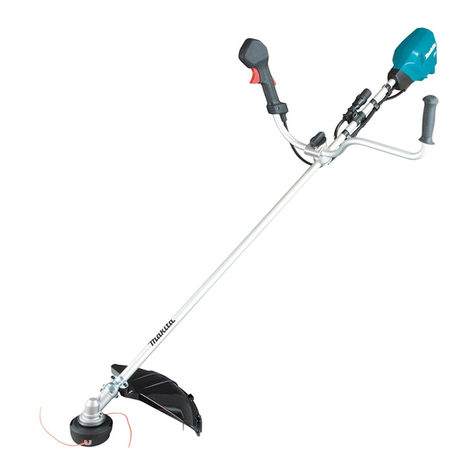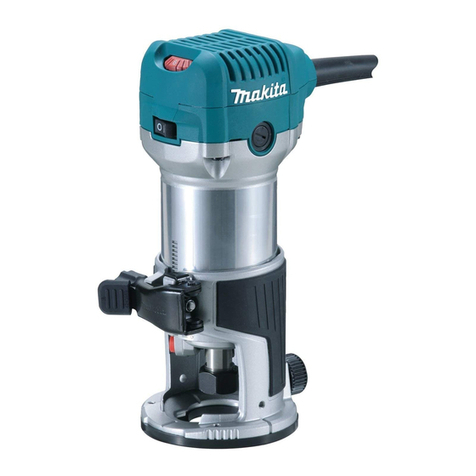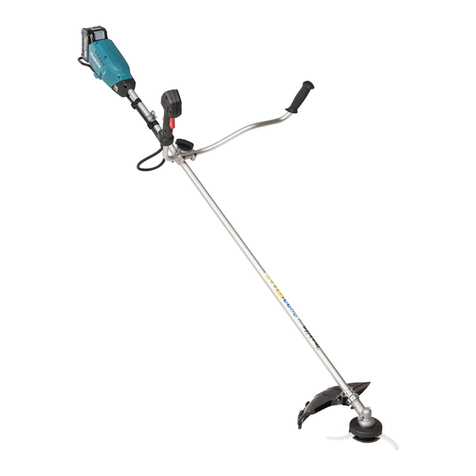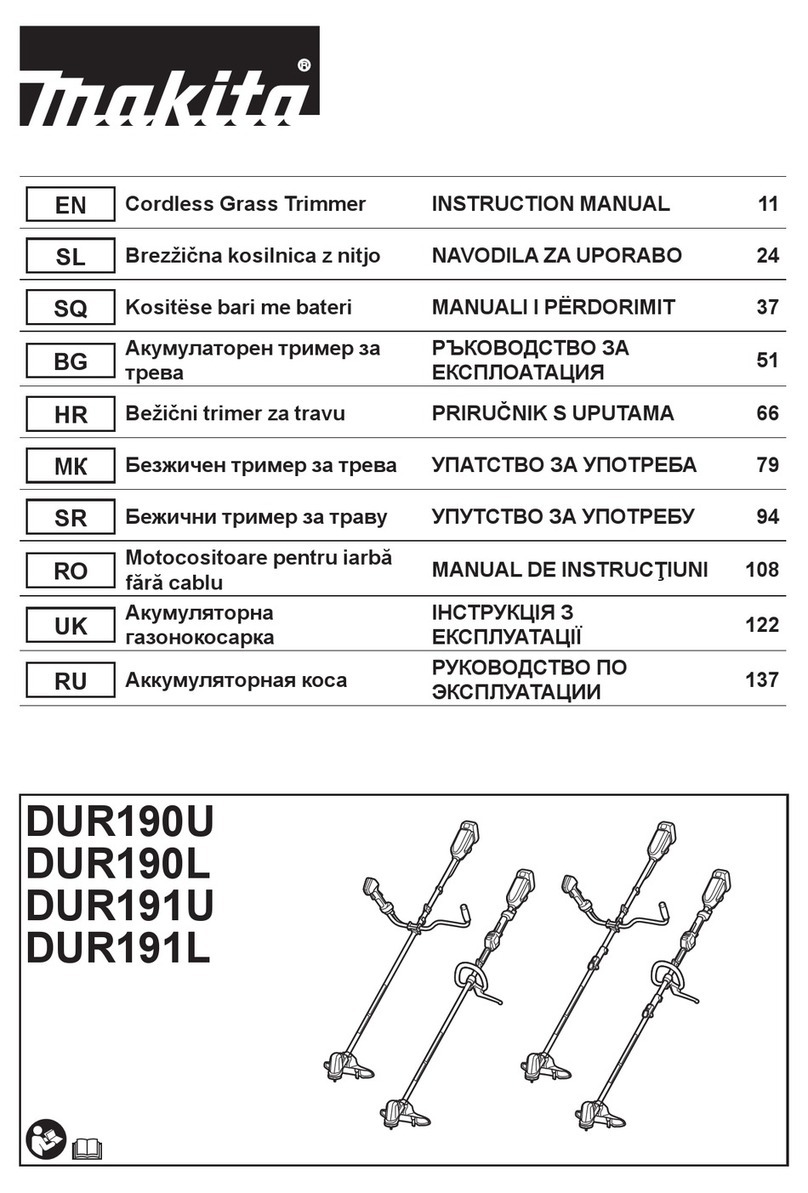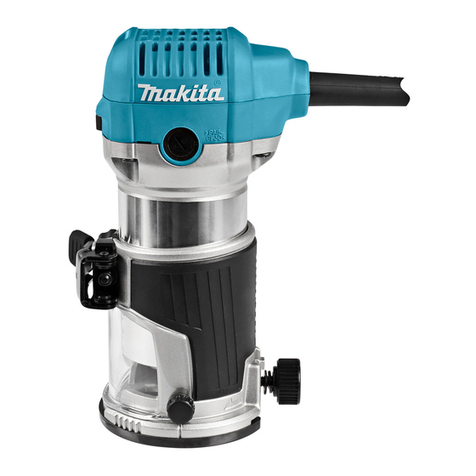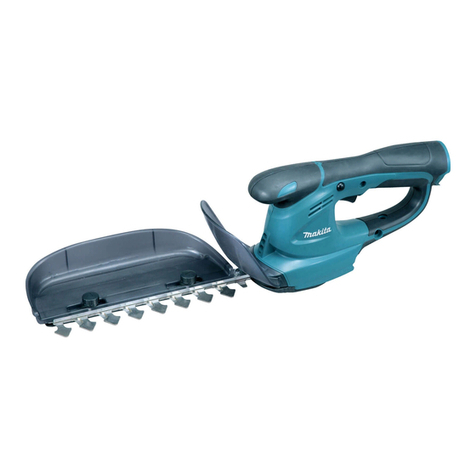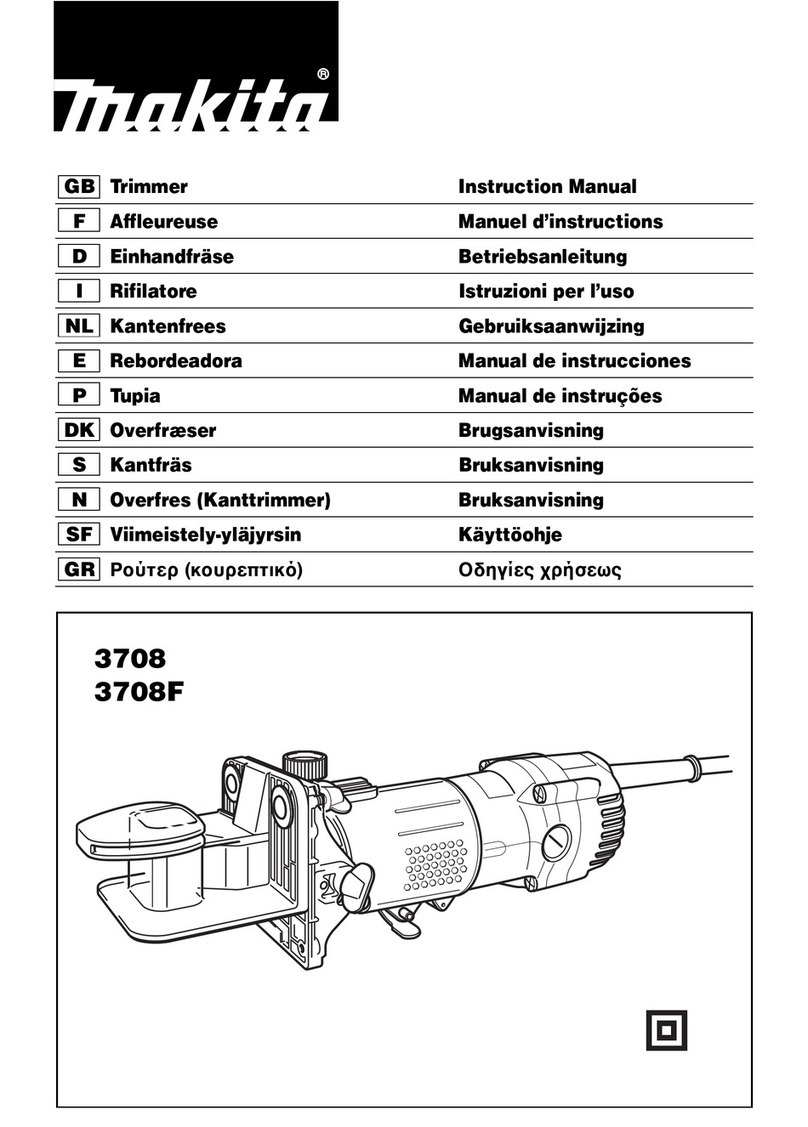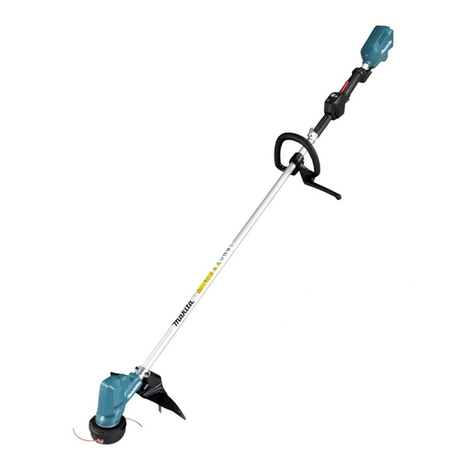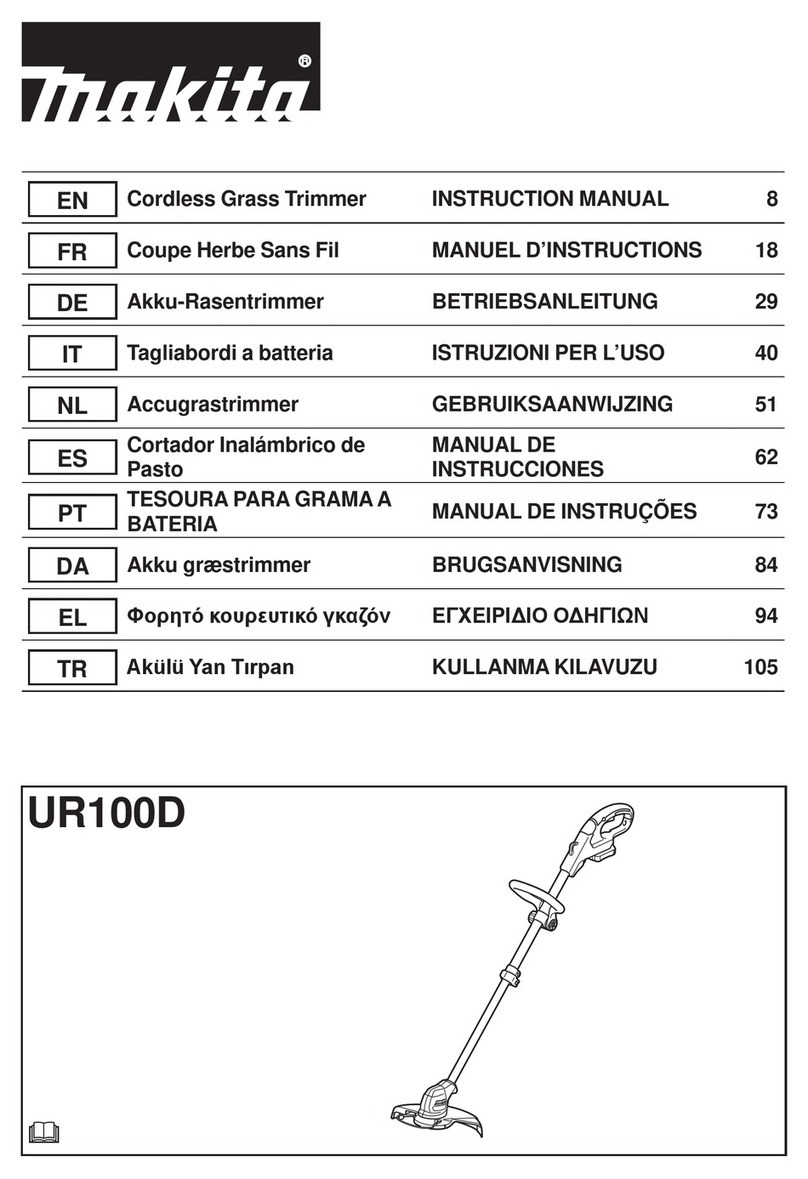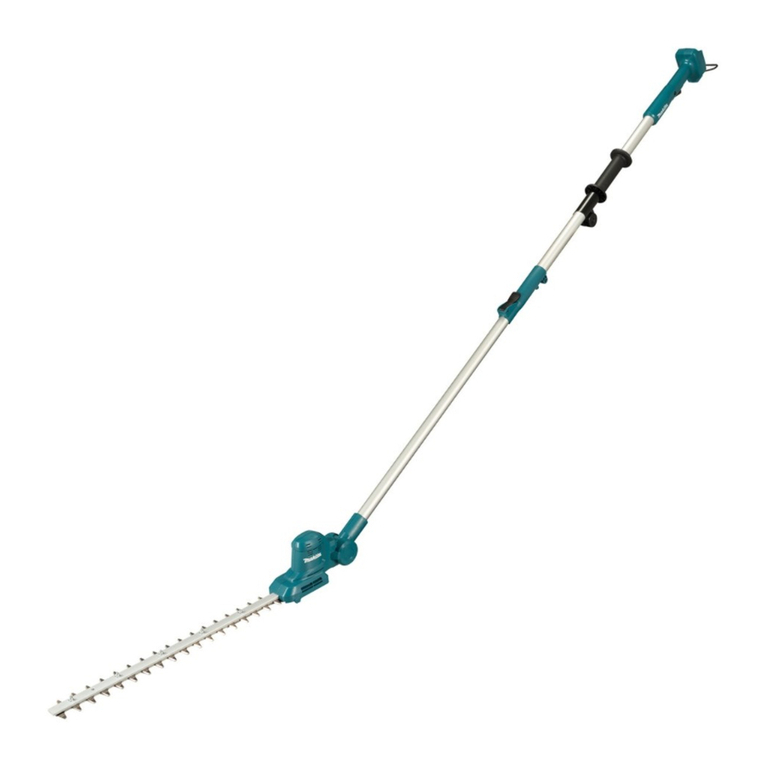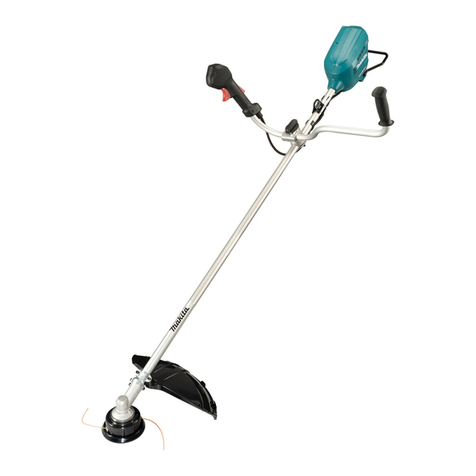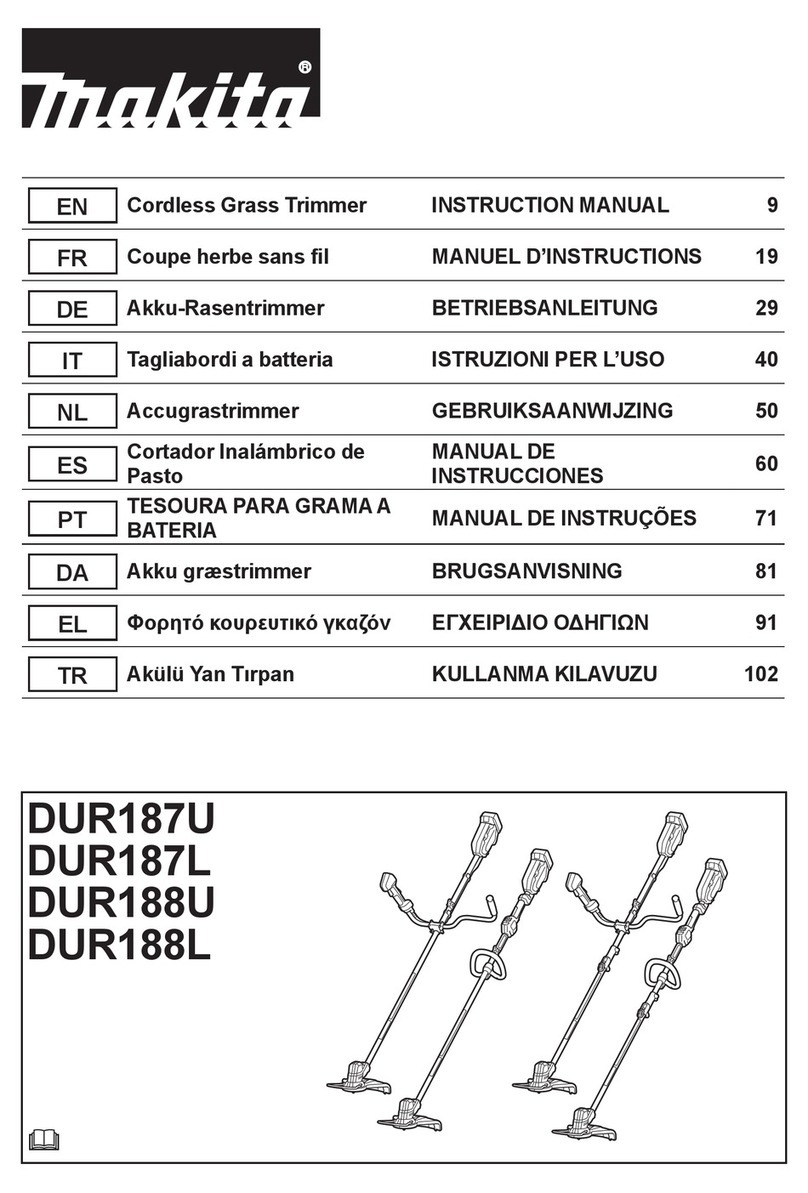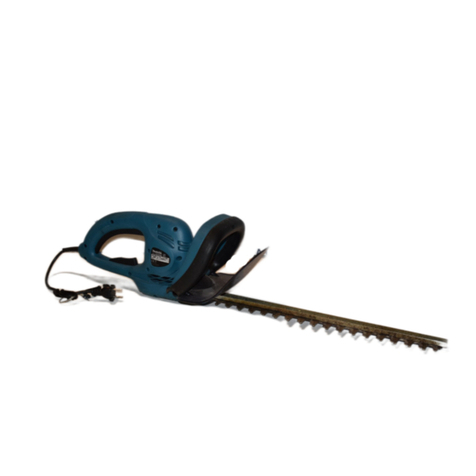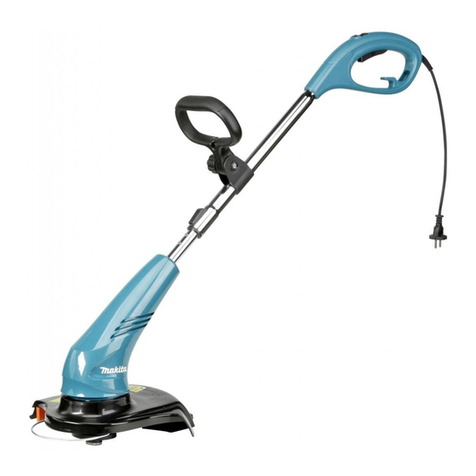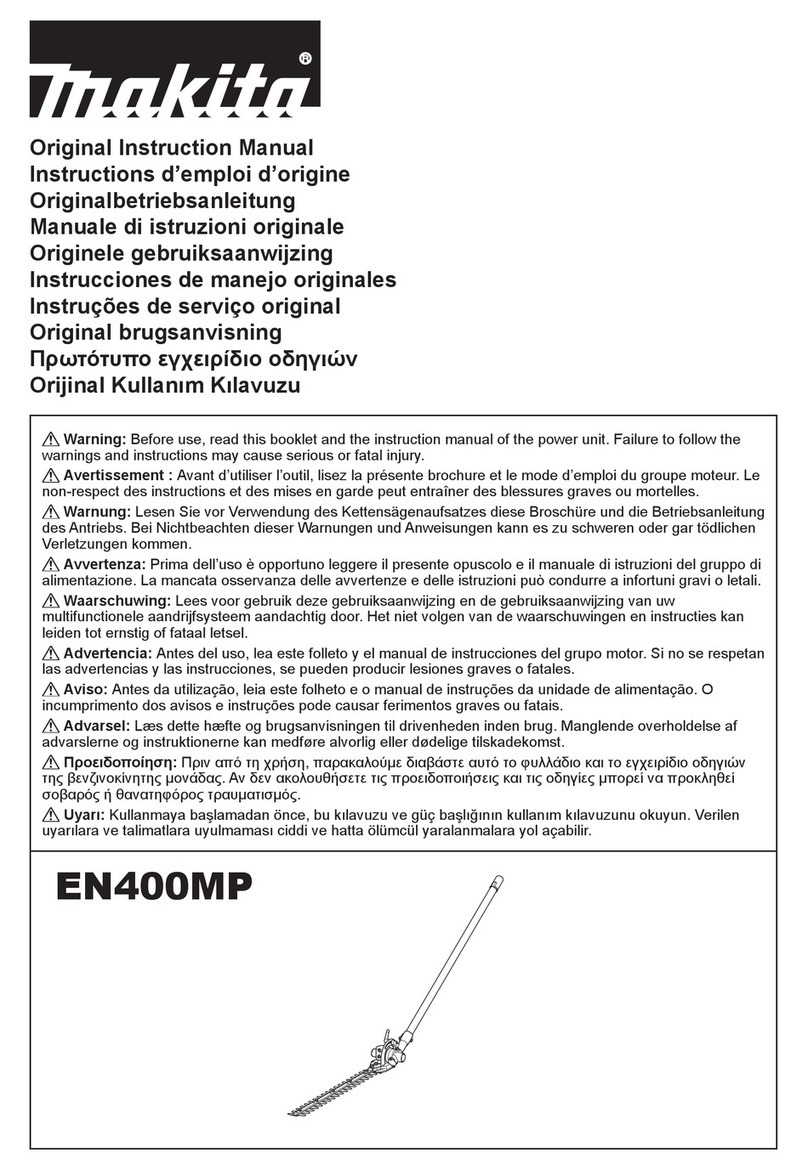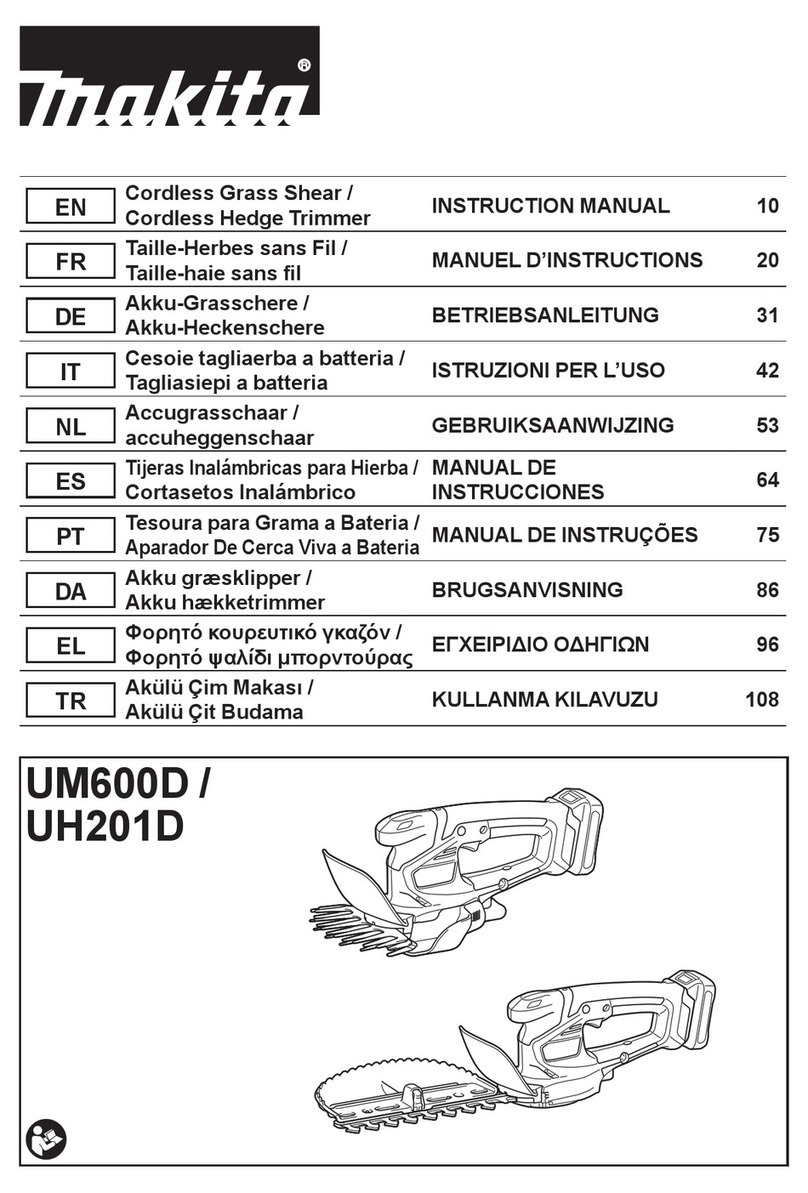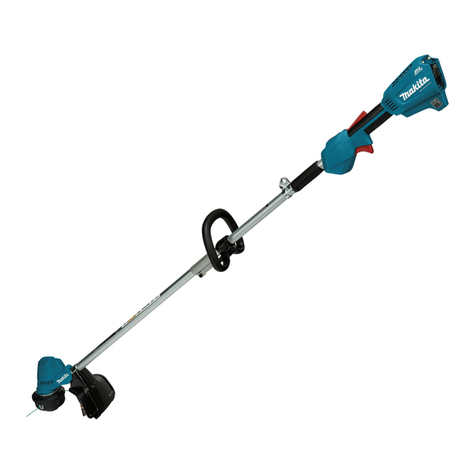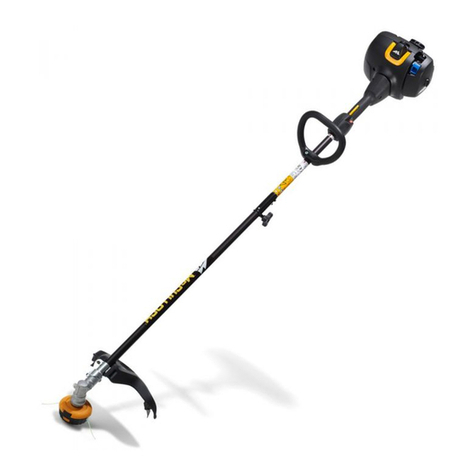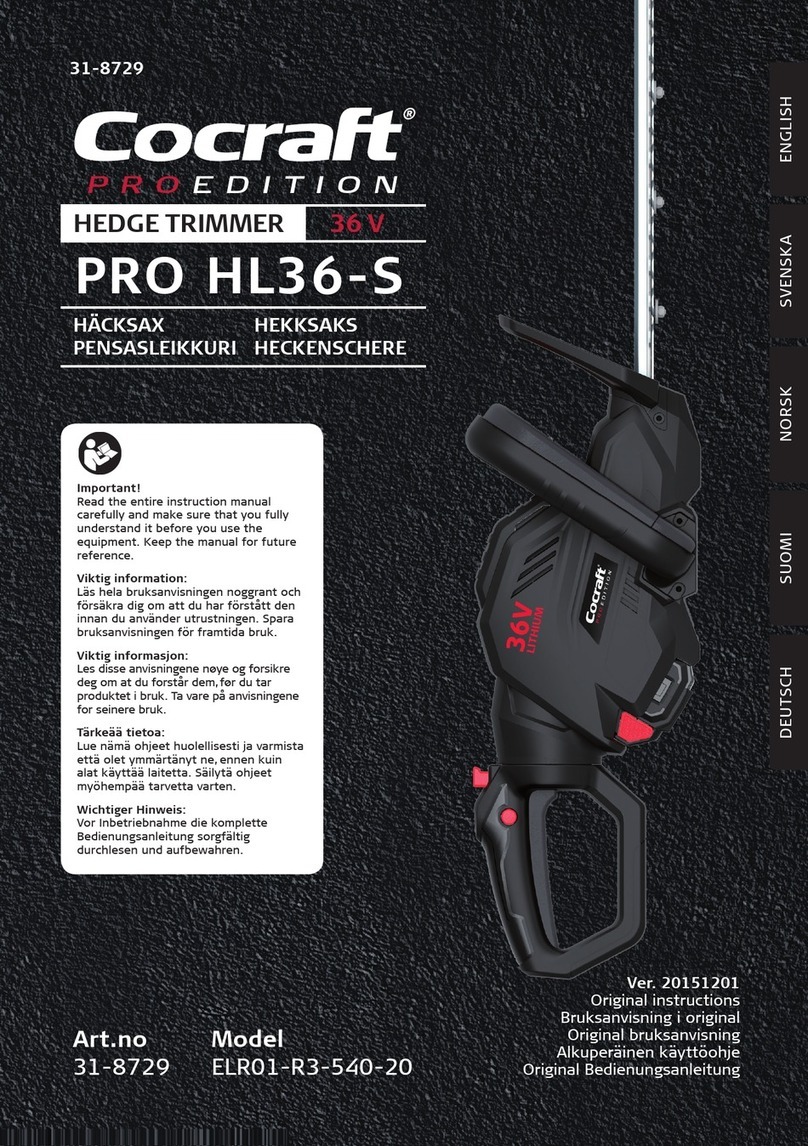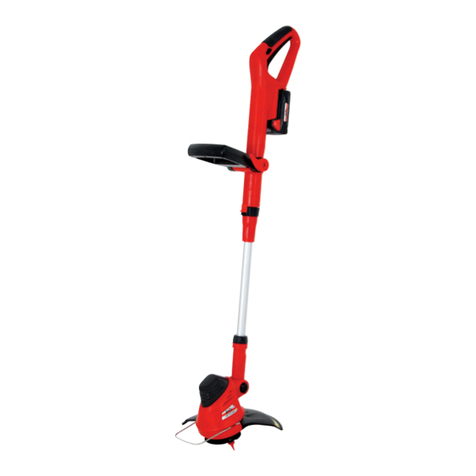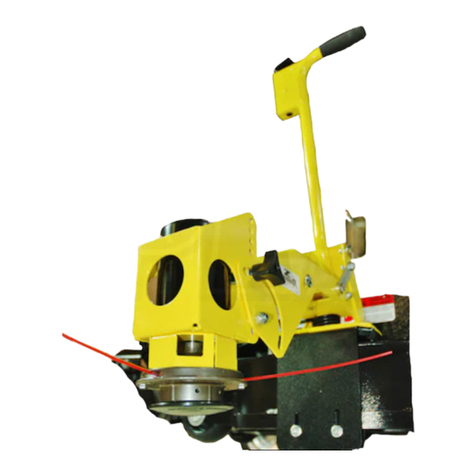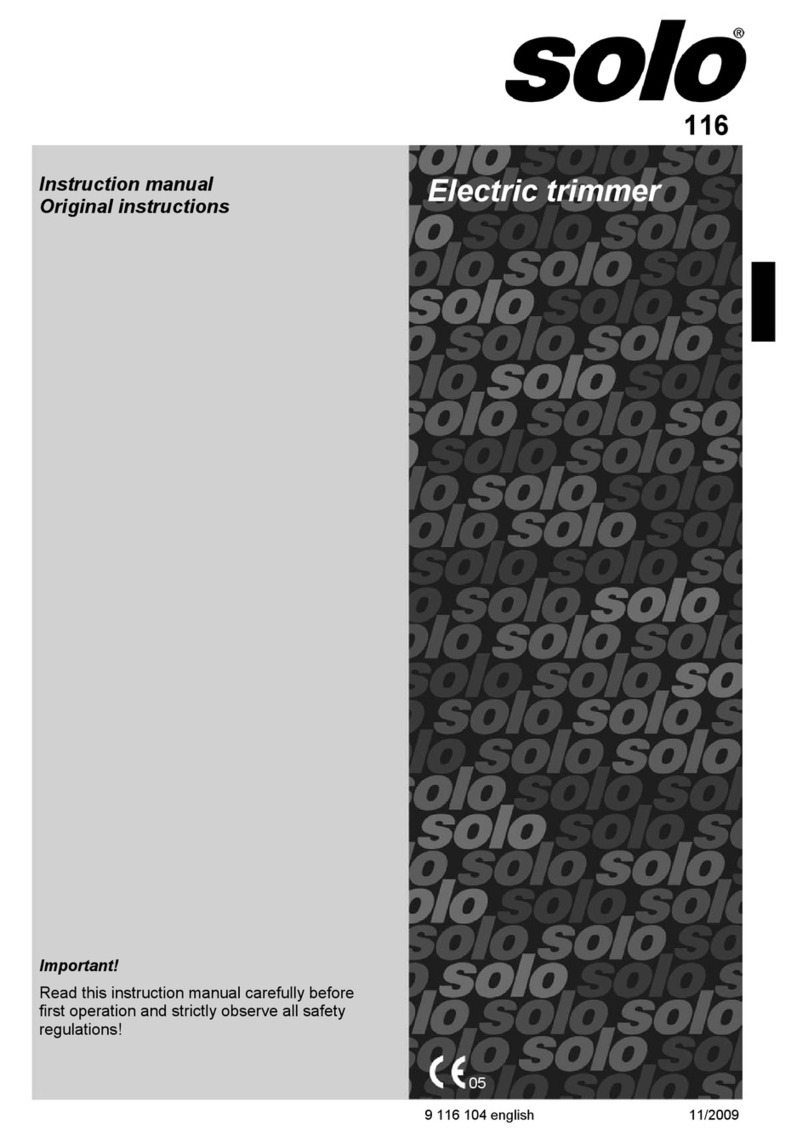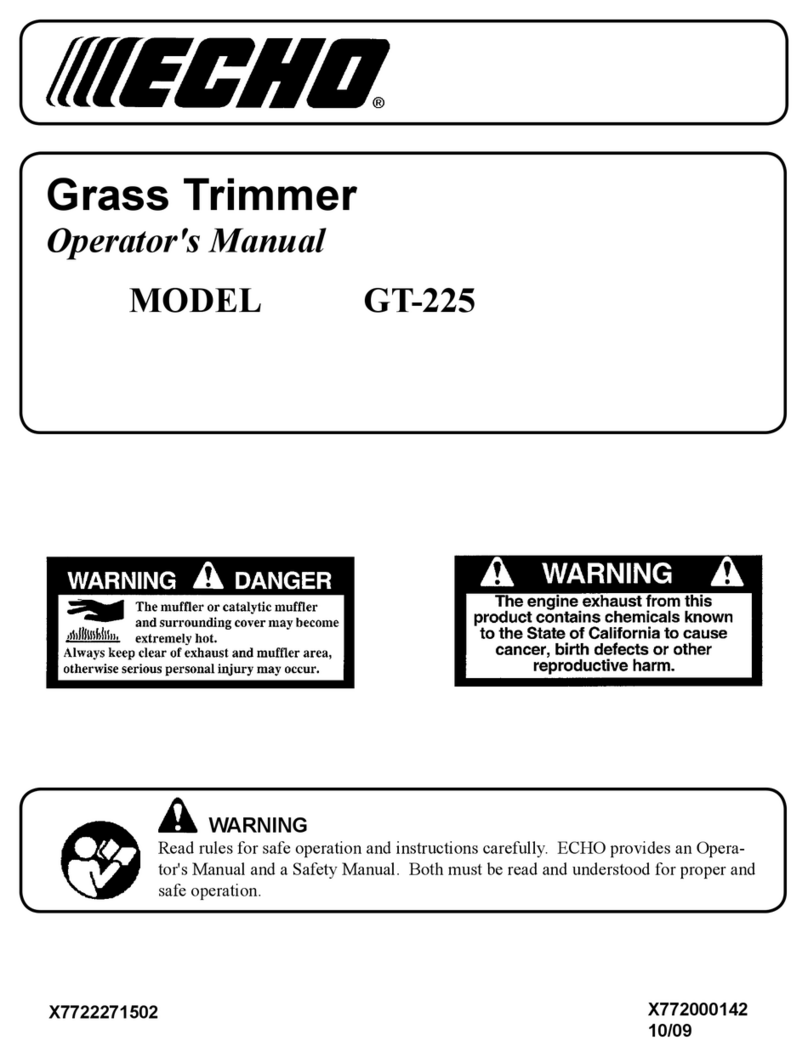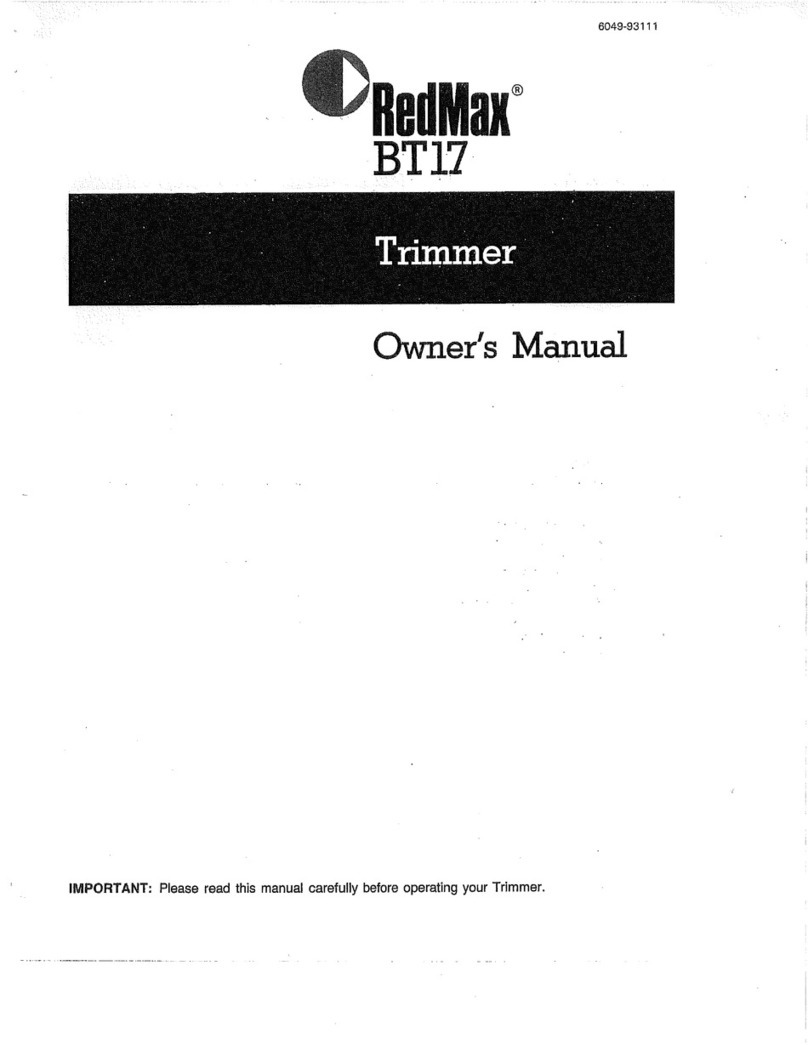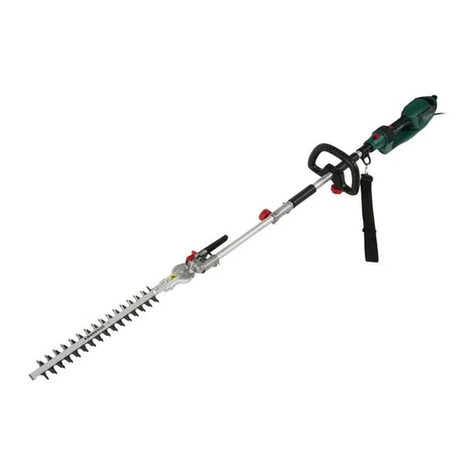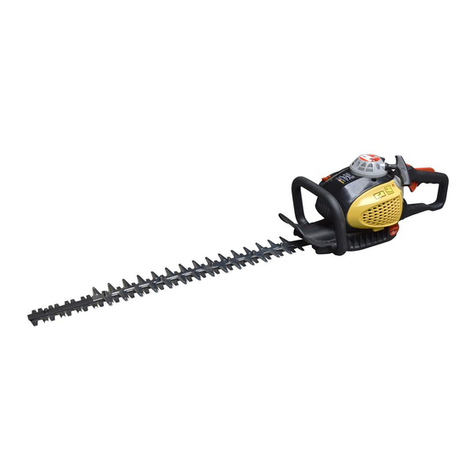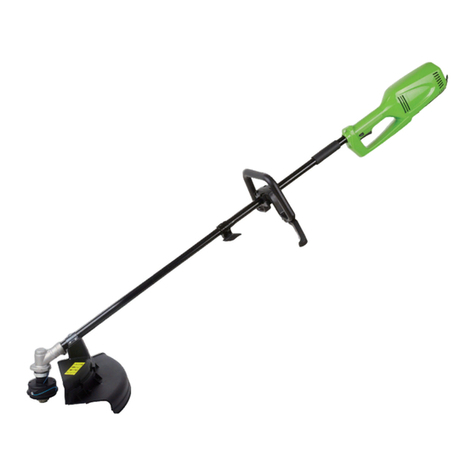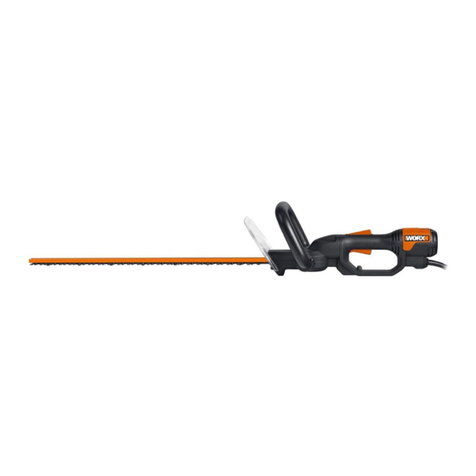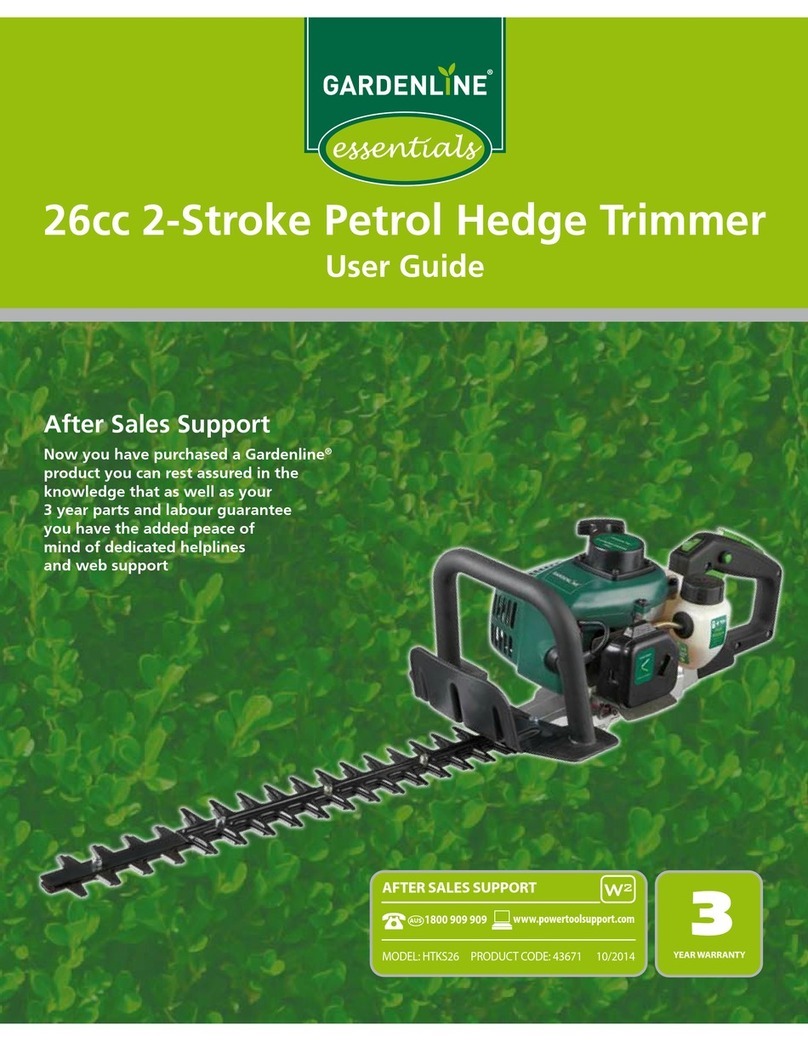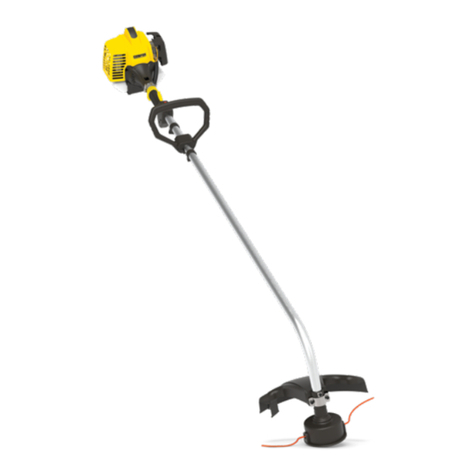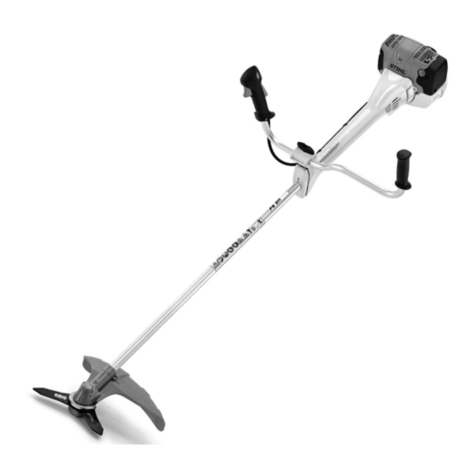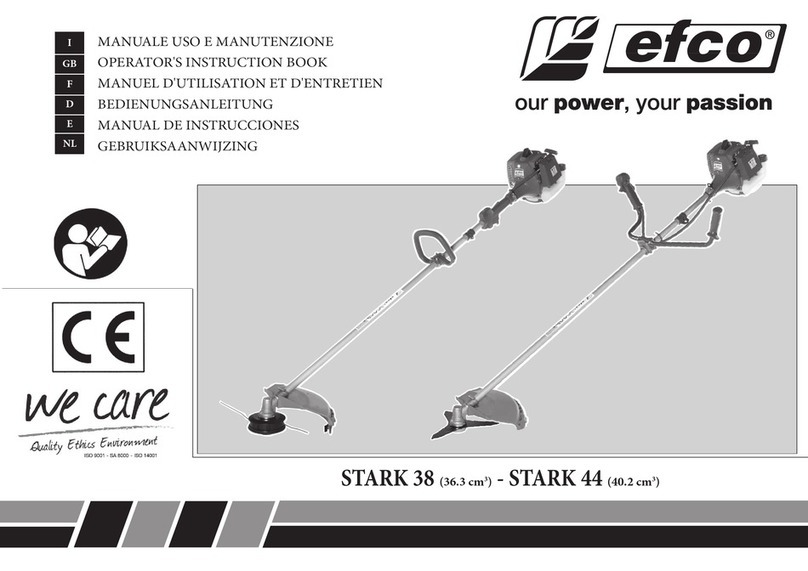7
7. Use the hedge trimmer only if you are in good
physical condition. If you are tired, your attention
will be reduced. Be especially careful at the end
of a working day. Perform all work calmly and
carefully. The user is responsible for all damages
to third parties.
8. Never use the trimmer when under the influence
of alcohol, drugs or medication.
9. Work gloves of stout leather are part of the basic
equipment of the hedge trimmer and must always
be worn when working with it. Also wear sturdy
shoes with anti-skid soles.
10. Before starting work check to make sure that the
trimmer is in good and safe working order. Ensure
guards are fitted properly. The hedge trimmer
must not be used unless fully assembled.
11. Make sure you have a secure footing before
starting operation.
12. Hold the tool firmly when using the tool.
13. Do not operate the tool at no-load unnecessarily.
14. Immediately switch off the motor and remove the
battery cartridge if the cutter should come into
contact with a fence or other hard object. Check
the cutter for damage, and if damaged repair
immediately.
15. Before checking the cutter, taking care of faults,
or removing material caught in the cutter, always
switch off the trimmer and remove the battery
cartridge.
16. Switch off the trimmer and remove the battery
cartridge before doing any maintenance work.
17. When moving the hedge trimmer to another
location, including during work, always remove
the battery cartridge and put the blade cover on
the cutter blades. Never carry or transport the
trimmer with the cutter running. Never grasp the
cutter with your hands.
18. Clean the hedge trimmer and especially the cutter
after use, and before putting the trimmer into
storage for extended periods. Lightly oil the cutter
and put on the cover. The cover supplied with the
unit can be hung on the wall, providing a safe and
practical way to store the hedge trimmer.
19. Store the hedge trimmer with the cover on, in a
dry room. Keep it out of reach of children. Never
store the trimmer outdoors.
SAVE THESE INSTRUCTIONS.
WARNING:
DO NOT let comfort or familiarity with product
(gained from repeated use) replace strict adherence
to safety rules for the subject product. MISUSE or
failure to follow the safety rules stated in this
instruction manual may cause serious personal
injury.
ENC007-8
IMPORTANT SAFETY
INSTRUCTIONS
FOR BATTERY CARTRIDGE
1. Before using battery cartridge, read all
instructions and cautionary markings on (1)
battery charger, (2) battery, and (3) product
using battery.
2. Do not disassemble battery cartridge.
3. If operating time has become excessively
shorter, stop operating immediately. It may
result in a risk of overheating, possible burns
and even an explosion.
4. If electrolyte gets into your eyes, rinse them
out with clear water and seek medical
attention right away. It may result in loss of
your eyesight.
5. Do not short the battery cartridge:
(1) Do not touch the terminals with any
conductive material.
(2) Avoid storing battery cartridge in a
container with other metal objects such
as nails, coins, etc.
(3) Do not expose battery cartridge to water
or rain.
A battery short can cause a large current flow,
overheating, possible burns and even a
breakdown.
6. Do not store the tool and battery cartridge in
locations where the temperature may reach or
exceed 50 ゚C (122 ゚F).
7. Do not incinerate the battery cartridge even if
it is severely damaged or is completely worn
out. The battery cartridge can explode in a fire.
8. Be careful not to drop or strike battery.
9. Do not use a damaged battery.
10. Follow your local regulations relating to
disposal of battery.
SAVE THESE INSTRUCTIONS.
Tips for maintaining maximum battery life
1. Charge the battery cartridge before
completely discharged.
Always stop tool operation and charge the
battery cartridge when you notice less tool
power.
2.
Never recharge a fully charged battery cartridge.
Overcharging shortens the battery service life.
3. Charge the battery cartridge with room
temperature at 10 ゚C - 40 ゚C (50 ゚F - 104 ゚F).
Let a hot battery cartridge cool down before
charging it.
4. Charge the battery cartridge once in every six
months if you do not use it for a long period
of time.

